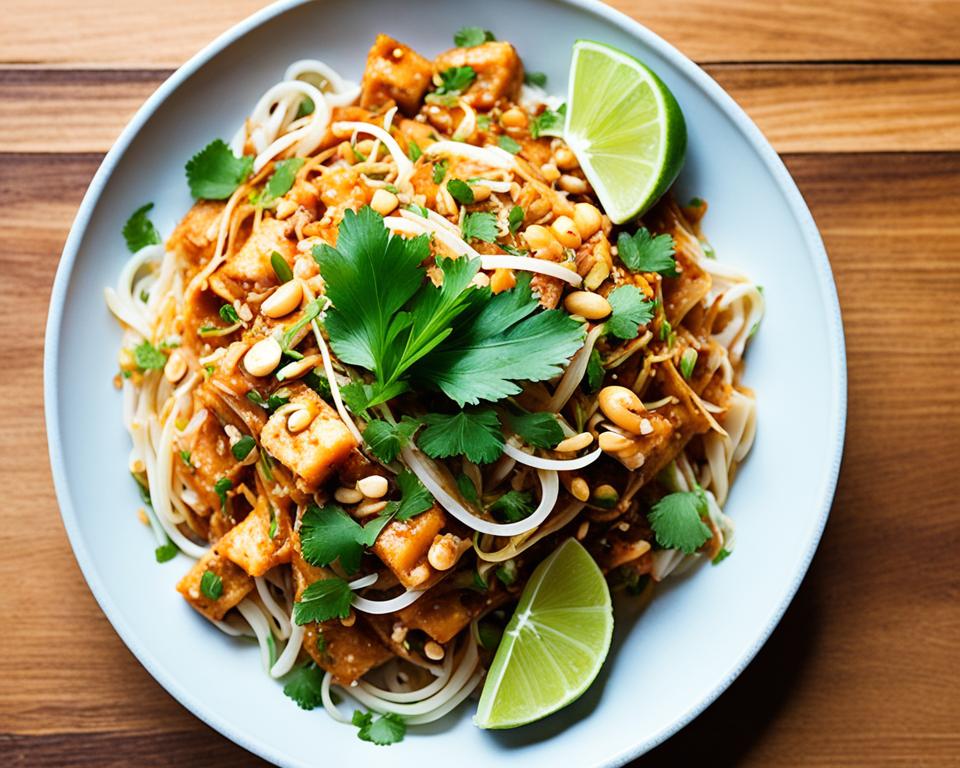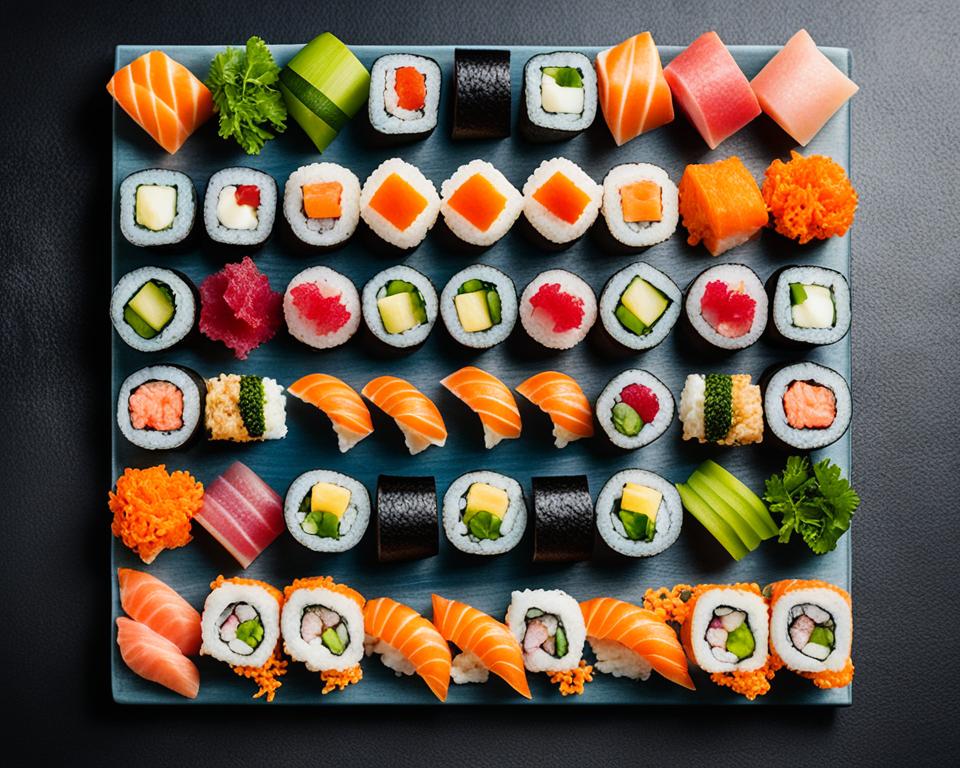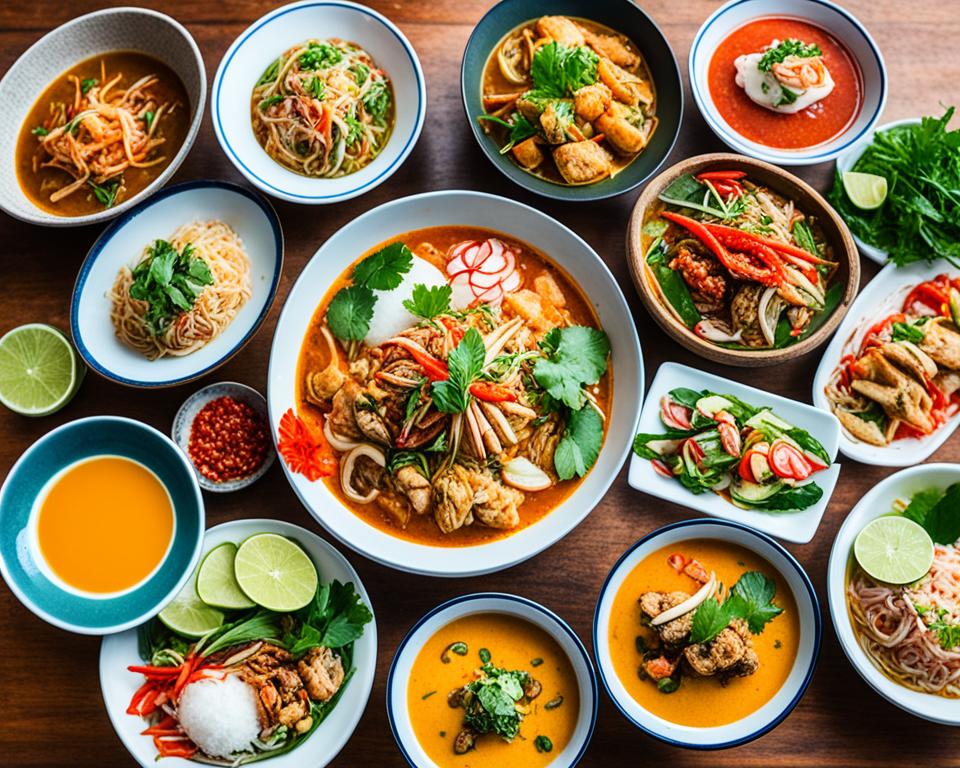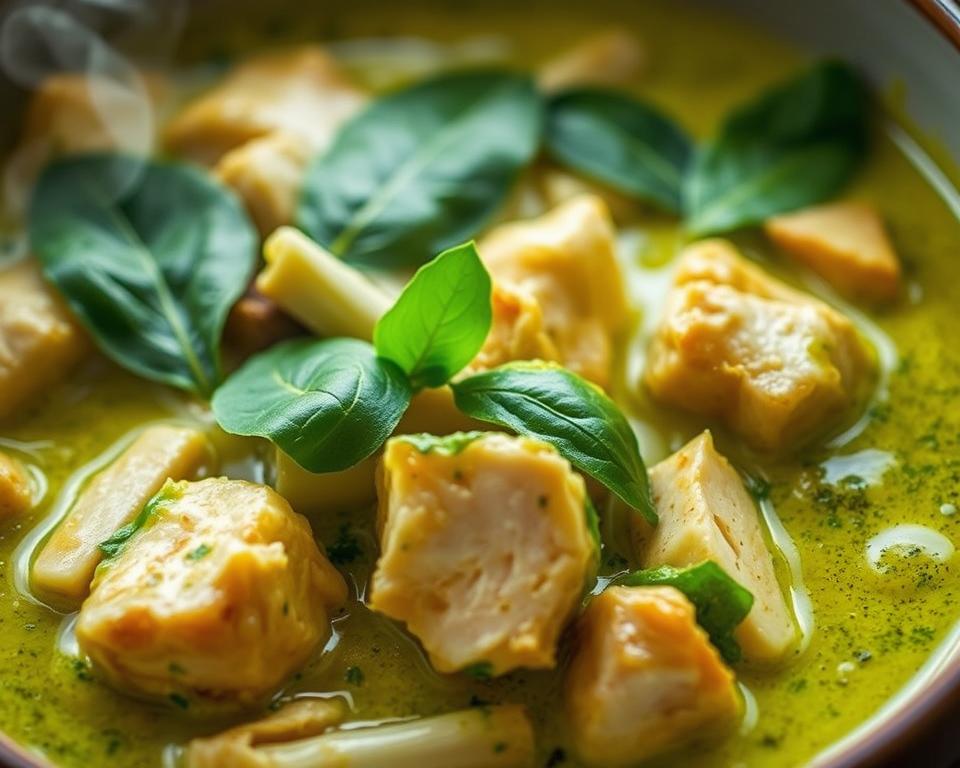Start a flavorful journey with this recipe for authentic Pad Thai, a favorite Thai dish. Learn where it comes from and what gives it its amazing taste. You will learn to make perfect rice noodles and stir-fry like a pro.
Find out what makes Pad Thai so special. It’s all about the mouthwatering peanut sauce and the mix of tamarind paste and fish sauce. Master cooking the noodles and stir-frying for a real Thai cuisine meal. No matter your cooking level, this guide will help you add Thai delight to your dining table.
Read more interesting information at ::lansdowne-moody
What is Pad Thai?
Pad Thai is a famous dish from Thailand. It’s full of flavor, mixing sweet, sour, salty, and umami tastes perfectly. This stir-fried noodle dish is loved all over the world.
The National Dish of Thailand
Pad Thai is Thailand’s national dish. It reflects the country’s rich culinary history. Locals and visitors enjoy Pad Thai, making it a key part of Thai food culture.
History and Origins of Pad Thai
In the 1930s, Thailand’s government promoted Pad Thai to celebrate its food. Noodles were then becoming more popular. This dish helped unify Thailand’s different regions through one meal.
Over time, Pad Thai’s recipe changed. Different street vendors and regions added their own flavor. Now, people worldwide love this Thai classic.
“Pad Thai is not just a dish, it’s a cultural experience that transcends borders and brings people together through the universal language of food.”
Pad Thai Ingredients
Pad thai is Thailand’s favorite dish, mixing sweet, sour, and salty tastes. It includes key ingredients that give it its unique flavor. To make real pad thai at home, knowing these ingredients is key.
Essential Pad Thai Sauce Ingredients
The pad thai sauce is important, with its taste from key parts:
- Rice noodles: Pad thai uses thin rice noodles for a great base.
- Tamarind paste: This slightly sweet paste makes pad thai tangy.
- Fish sauce: Fish sauce adds an umami, or savory, flavor.
- Palm sugar: It’s used for a hint of sweetness in the dish.
- Peanut sauce: Peanut sauce, with peanut butter and spices, adds flavor too.
By mixing these ingredients right, you get the delicious pad thai taste everyone loves.
“Pad thai is a harmonious dance of sweet, sour, salty, and umami flavors, all coming together in a delightful stir-fried noodle dish.”
Preparing the Rice Noodles
Making a great pad thai demands careful work with the rice noodles. They’re the base of this signature Thai meal. It’s key to nail their texture for genuine flavor.
To start, you soak the noodles. Plunge them in water at room temperature. Let them soak for 30 to 60 minutes until soft. Remember, avoid hot water or you’ll end up with mush.
Next, cook the rice noodles after they’ve softened. Boil a pot of water. Put in the soaked noodles and cook for 2 to 3 minutes. Don’t forget to stir. They should be soft, but still firm. Then, drain the noodles and get ready for your pad thai adventure.
“The secret to perfect pad thai noodles lies in the balance between softness and texture. Soak them just right, and you’ll unlock the true essence of this beloved Thai dish.”
With these steps, your rice noodles will be just right for a top-notch pad thai. Get ready for a flavor journey to Thailand’s vibrant food scene.
Stir-Frying Pad Thai
Stir-frying is a must to make a tasty pad thai. Learning to stir-fry well is crucial. It brings out the dish’s special taste and feel. We’ll share how you can perfect the stir-fry process for better pad thai.
Tips for Perfect Stir-Frying
To stir-fry pad thai well, keep these tips in mind:
- Heat the Wok Properly: Make sure your wok is really hot before you put in the oil. This starts the wok hei, giving great flavor to the dish.
- Add Ingredients in the Right Order: Begin with the meat, then add the veggies, noodles, and sauce last. This order lets everything cook perfectly.
- Maintain Constant Motion: Keep stirring the food in the wok to avoid burning. Tossing it quickly spreads the heat evenly.
- Don’t Overcrowd the Wok: If you have to, cook in small batches to avoid steaming. Too many ingredients make for a bad, soggy pad thai.
- Time it Right: Be careful not to overcook the noodles. They can turn mushy fast. Taste as you cook and make adjustments as needed.
With these stir-frying tips, you can make an amazing pad thai. It will be full of real Thai flavors and a great texture.
“The secret to a great pad thai is in the wok work. Mastering the stir-fry technique is the key to unlocking the dish’s true potential.”
Authentic Thai Flavors
True pad thai needs a mix of flavors that makes Thai food stand out. It uses fish sauce for its saltiness and tamarind paste for a bit of sweet and tang. These are key to giving pad thai its special taste.
Pad thai sauce makes the dish come alive. It’s a mix of important parts like:
- Fish Sauce: This key ingredient brings a salty and rich taste to meals.
- Tamarind Paste: It adds a sour touch, balancing the other flavors perfectly.
- Palm Sugar: Makes the dish less sour and salty, completing the taste.
- Lime Juice: A bit of citrus juice makes the meal fresher and more enjoyable.
There are more special thai flavors in pad thai, like:
- Garlic: It smells strong and adds a lot of flavor.
- Shallots: These onions are a bit sweet, bringing a nice taste.
- Chilies: They add a spicy touch that you can change based on what you like.
- Fresh Herbs: Herbs like cilantro and basil make everything smell and taste fresh.
Learning about these ingredients helps cooks make tasty pad thai at home. They can feel like they’re in Bangkok with every bite of this famous dish.
| Key Ingredient | Flavor Contribution |
|---|---|
| Fish Sauce | Provides a salty, umami-rich foundation |
| Tamarind Paste | Adds a tangy, slightly sour note |
| Palm Sugar | Balances the sour and salty flavors with sweetness |
| Lime Juice | Brightens and adds a citrusy acidity |
| Garlic | Provides depth and complexity with its pungent aroma |
| Shallots | Lend a sweet, slightly caramelized flavor |
| Chilies | Deliver a fiery kick that can be adjusted to taste |
| Fresh Herbs | Add a refreshing, herbal note to the dish |
“The flavors of Thailand are like a symphony, with each ingredient playing a unique and essential role in creating the perfect harmony.”
Customizing Your Pad Thai Recipe
The traditional pad thai recipe is well-loved and known for its flexibility. It’s perfect for vegetarians, vegans, or anyone wanting to try new tastes. You can easily adjust the ingredients to fit your diet.
Vegetarian and Vegan Options
Vegetarians or vegans can use tofu, tempeh, or assorted sautéed veggies instead of meat. Try adding these vegetables to your pad thai:
- Firm tofu or tempeh, cubed and sautéed
- Sliced bell peppers, mushrooms, and carrots
- Chopped broccoli, baby corn, and snow peas
- Finely chopped cabbage or bean sprouts
For the pad thai sauce, skip the fish sauce. Use soy sauce or tamari as a tasty alternative. Adding coconut milk also makes it creamier.
| Traditional Pad Thai | Vegetarian Pad Thai | Vegan Pad Thai |
|---|---|---|
| Shrimp or chicken | Tofu or mixed vegetables | Tofu or mixed vegetables |
| Fish sauce | Soy sauce or tamari | Soy sauce or tamari |
| Eggs | Scrambled tofu | Omit |
With these swaps, your pad thai recipe will be both tasty and friendly to your dietary requirements. It keeps the rich Thai taste while suiting your needs.
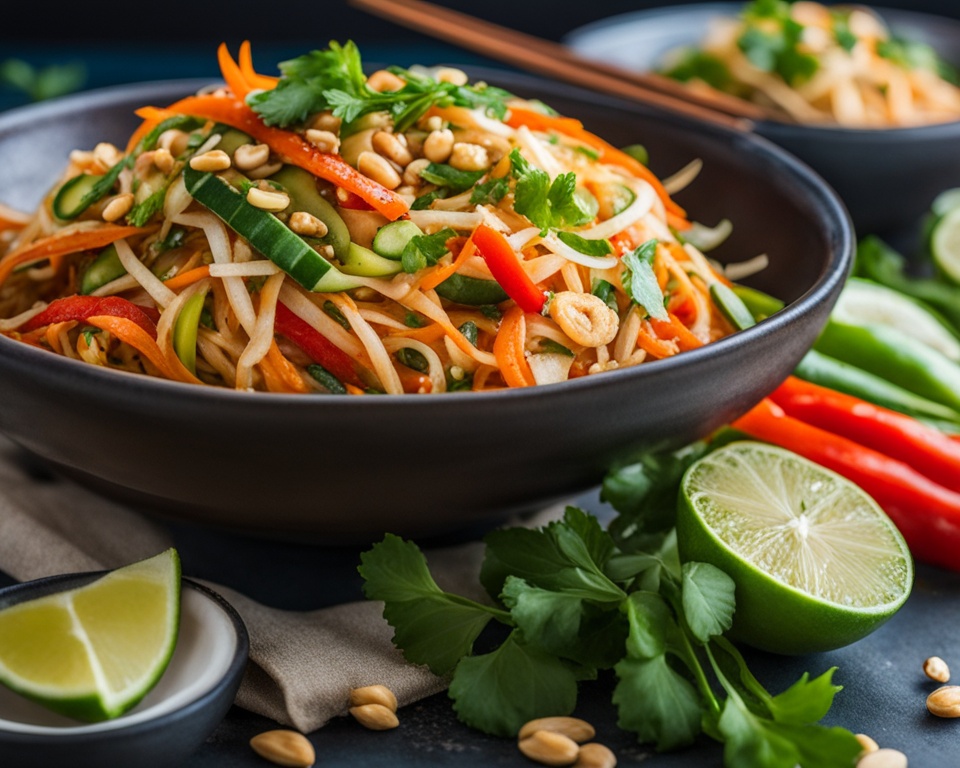
Pad Thai Garnishes
To make a classic pad thai truly special, you need the right garnishes. They make the dish not only look good but also taste even better.
Key to this are fresh herbs. Cilantro adds a burst of smell and color. Bean sprouts bring a cool, crispy touch. And crushed peanuts give a delicious nutty flavor.
For a real taste of Thailand, add these extras:
- Freshly chopped scallions or green onions for a subtle onion flavor
- Wedges of lime to add a tangy, citrusy burst
- Dried chili flakes or sliced fresh chilies for a spicy kick
- Crispy fried shallots or garlic for a crunchy textural contrast
Finding the perfect mix is about balance. Each garnish should bring out the best in the others. Try different combo’s to discover your favorite.
| Garnish | Flavor Profile | Texture |
|---|---|---|
| Cilantro | Bright, aromatic | Crisp, fresh |
| Bean sprouts | Mild, refreshing | Crunchy |
| Crushed peanuts | Nutty, savory | Crisp, textured |
| Scallions | Onion-like, fresh | Crisp, juicy |
| Lime wedges | Tart, citrusy | Juicy |
| Chili flakes/sliced chilies | Spicy, bold | Crisp, crunchy |
| Fried shallots/garlic | Savory, nutty | Crisp, caramelized |
“The beauty of pad thai lies in the perfect balance of flavors and textures. Garnishes are the finishing touch that truly elevate this Thai classic.”
Serving Suggestions
Pad thai can be enjoyed in many ways. It’s a great main course or a tasty side. When serving, add other Thai dishes or sides to make the meal better.
Main Course or Side Dish?
Is pad thai the main star or supporting player? It’s perfect as the main dish, offering a full Thai feast. Or, pair it with curries, stir-fries, or salads for a diverse meal.
Suggested Side Dishes
- Fresh mango or pineapple slices
- Steam or sauté broccoli, snap peas, or bean sprouts
- Crisp cucumber salad with a light, tangy dressing
- Jasmine or coconut rice
- Crunchy fried shallots or peanuts for texture
Condiments and Garnishes
Let your guests top pad thai as they like. Offer things like:
- Lime wedges for zesty flavor
- Chili-based sauces for extra heat
- Cilantro, scallions, or crushed peanuts to garnish
Provide many options to make their pad thai serving just right. This improves their meal experience.
| Dish | Description | Complementary Flavor Profile |
|---|---|---|
| Mango Salad | Fresh mango slices tossed in a tangy, sweet vinaigrette | The mango’s sweetness goes well with the pad thai |
| Coconut Rice | Jasmine rice in creamy coconut milk | Coconut’s richness pairs nicely with the pad thai |
| Stir-Fried Greens | Sautéed bok choy, spinach, or leafy greens | The greens add a fresh crunch to the meal |
Exploring the many ways to enjoy pad thai can lead to a memorable meal. It meets everyone’s taste.
Pad Thai Recipe
Making a real pad thai recipe at home is a great way to enjoy Thailand’s lively tastes. It’s a favorite dish that mixes sweet, sour, salty, and umami flavors perfectly. These flavors blend in a tasty stir-fry noodle meal. Follow the steps below to cook this authentic Thai noodles dish in your own kitchen.
Ingredients for Pad Thai
- 8 ounces (225g) rice noodles
- 2 tablespoons tamarind paste
- 2 tablespoons fish sauce
- 1 tablespoon brown sugar
- 2 cloves garlic, minced
- 1 egg, beaten
- 1/2 cup bean sprouts
- 2 tablespoons chopped roasted peanuts
- 2 tablespoons chopped fresh cilantro
- 1 lime, cut into wedges
Instructions for Pad Thai
- Soak the rice noodles in hot water for 15-20 minutes until they are soft. Drain them and put them to the side.
- Combine the tamarind paste, fish sauce, and brown sugar in a bowl. Mix well until the sugar dissolves. Put it aside.
- Get a large wok or skillet hot over high heat. Add a bit of oil and the garlic. Stir-fry for 30 seconds until it’s fragrant.
- Add the beaten egg and keep stirring it. Break it into small pieces until it’s fully cooked.
- Put in the soaked noodles and the sauce. Mix everything well. Cook for a few minutes until the noodles are soft and the sauce is spread out.
- Then add the bean sprouts. Cook for another minute.
- Take it off the heat. Top it with peanuts, cilantro, and a squeeze of lime.
Enjoy your homemade pad thai recipe right away. Its flavors will make you feel like you’re in the lively streets of Bangkok. Have fun with this authentic Thai noodles meal!
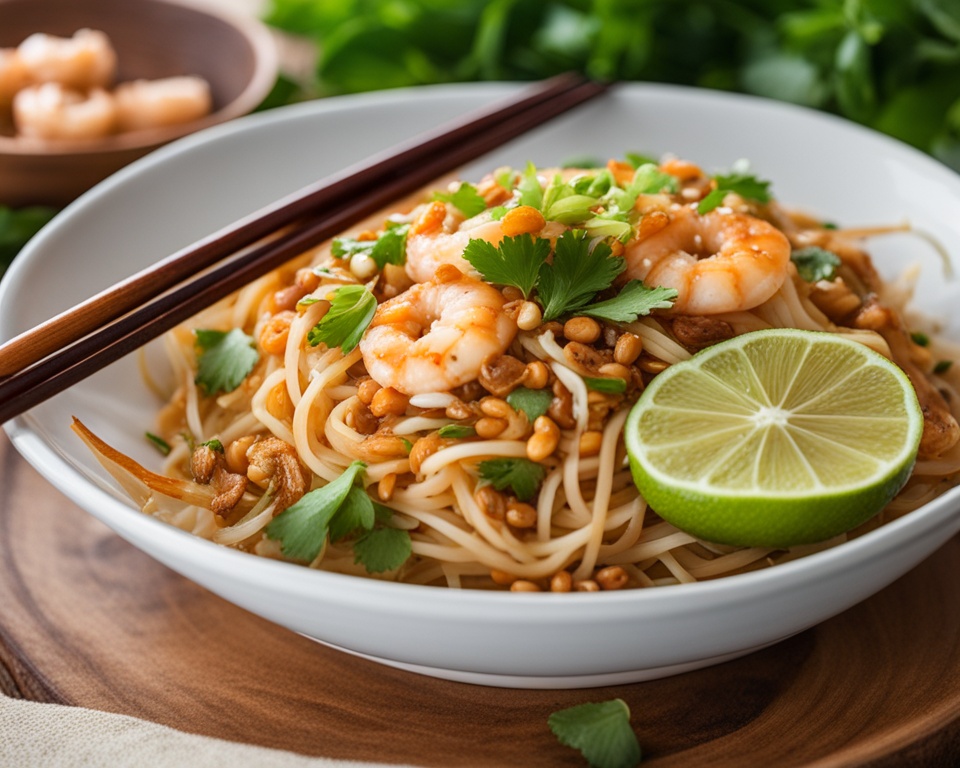
Meal Prep and Storage
Preparing pad thai in advance keeps it fresh. By using pad thai meal prep and storage tips, you’ll save time. Plus, you’ll get to enjoy this tasty dish all week long.
Pad Thai Meal Prep Tips
To start prepping your pad thai early:
- Cook the rice noodles ahead of time. Keep them in the fridge for up to 5 days in an airtight container.
- Chop up veggies like bean sprouts and scallions, and keep them in the fridge too.
- Mix the pad thai sauce and store it for quick and easy use later.
When you’re ready to eat, just cook the protein, add noodles and veggies, then mix it all up with the sauce.
Storing Leftover Pad Thai
For any leftovers, good storage is vital. Here’s how to keep your pad thai tasting fresh:
- Let the pad thai cool before putting it in the fridge in an airtight container or bag.
- Push the air out of the container to keep the noodles moist.
- You can keep leftovers in the fridge for 3-4 days.
- When it’s time to eat again, warm it up in a pan, and add some water or broth to the noodles.
With these tips for pad thai meal prep and storage, you’ll enjoy the rich flavors of this classic Thai dish longer.
Thai Street Food Experience
Pad thai, a favorite Thai noodle dish, wins over everyone’s hearts worldwide. The lively vibe and delicious smells of Thailand’s street food draw people in. This culture is a big part of the country’s food scene.
Bringing Thai Flavors Home
Experiencing real pad thai in Thailand is amazing, but you can make it at home. You just need the right ingredients and some tips. This way, you can have Thai street food taste in your own house.
Making pad thai at home lets you enjoy its real taste. You can also make it just how you like it. Knowing the basics brings Thailand’s exciting flavors to your table.
- Try different proteins like shrimp, chicken, or tofu to find your favorite.
- Change the spiciness by adding more or less chili to match your taste.
- Add fresh herbs such as cilantro and Thai basil for an authentic touch.
With some simple steps and practice, you will cook like a Thai chef. Enjoy the true flavors of pad thai at home. It’s all about bright colors, amazing scents, and strong flavors.
“Pad thai is not just a dish, it’s a culinary adventure that transports you to the vibrant streets of Thailand.”
Nutrition Facts
Pad Thai is a favorite Thai dish known for its great taste. It’s also a good choice for those who care about their health. Knowing the pad thai nutrition facts is key for smart eating. Now, let’s look at what makes this Thai favorite a good meal.
A serving of Pad Thai is about 1 cup and has about 400 calories. The calories vary slightly based on the recipe and ingredients. Most of these calories come from carbohydrates, which are important for energy, and are found in the rice noodles.
Pad Thai is good for energy too. It gives us 15-20 grams of protein in every serving. The protein mainly comes from the egg, shrimp, or tofu in the dish. Pad Thai also provides some healthy fats. You get about 10-15 grams of fat, which comes from the cooking oil and peanuts.
But, watch out for the sodium in Pad Thai. It can be high because of the soy sauce and fish sauce in it. A single serving might have up to 1,000 milligrams of sodium. This is a big part of what’s recommended for daily sodium intake.
For a healthier Pad Thai, you can make some changes. Use low-sodium soy sauce, choose brown rice noodles, and add lots of veggies. These simple steps keep the meal tasty while helping you stay on track with healthy eating.
| Nutrient | Amount per Serving |
|---|---|
| Calories | 400 |
| Carbohydrates | 50g |
| Protein | 15-20g |
| Fat | 10-15g |
| Sodium | 1,000mg |
Keep in mind, the pad thai nutrition info is a general view. Recipes can differ. Knowing these facts helps you make better food choices, even with a favorite like Pad Thai.
“Pad Thai is a delicious and nutritious dish that can be enjoyed as part of a balanced diet. By making informed choices, you can savor the authentic flavors while prioritizing your health.”
Frequently Made Mistakes
Making real Pad Thai at home can be a joy. But many face common pitfalls that can spoil the dish. Let’s look at these mistakes and how to fix them for top Pad Thai results.
Novice cooks often overcook rice noodles. This can make noodles mushy and lose their chew. To prevent this, carefully follow the cooking instructions and keep eye on the noodles. At the same time, undercooking them makes the dish too firm. So, getting the noodle texture right is crucial.
Not balancing the Pad Thai sauce flavors is another big mistake. Too much or too little tamarind, fish sauce, sugar, or lime can make the dish taste off. It’s important to measure and adjust these ingredients to get a perfect taste. This creates a well-rounded and tasty dish.
